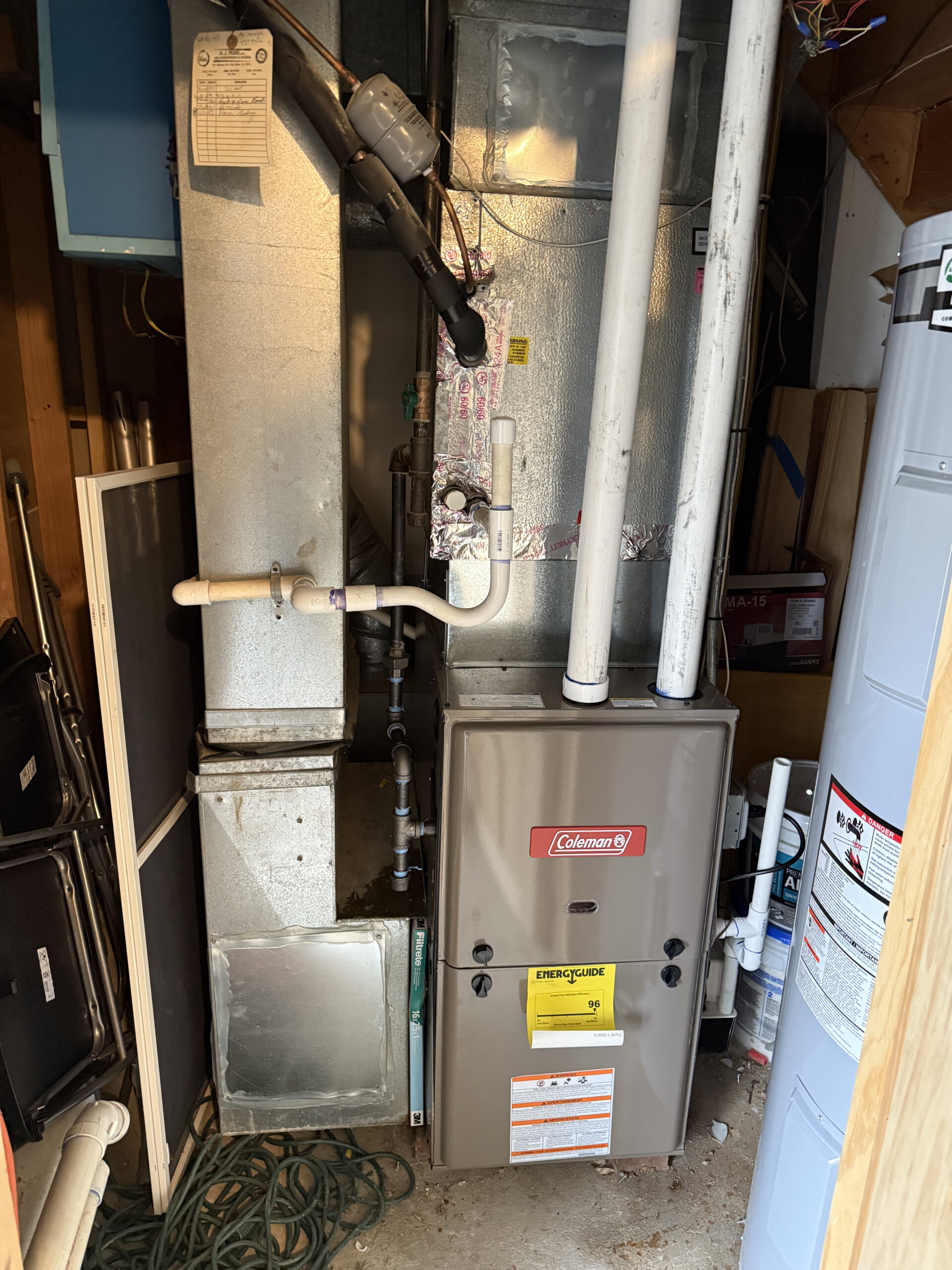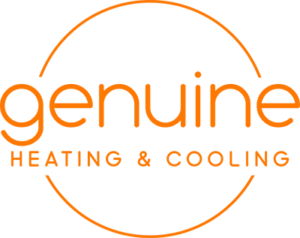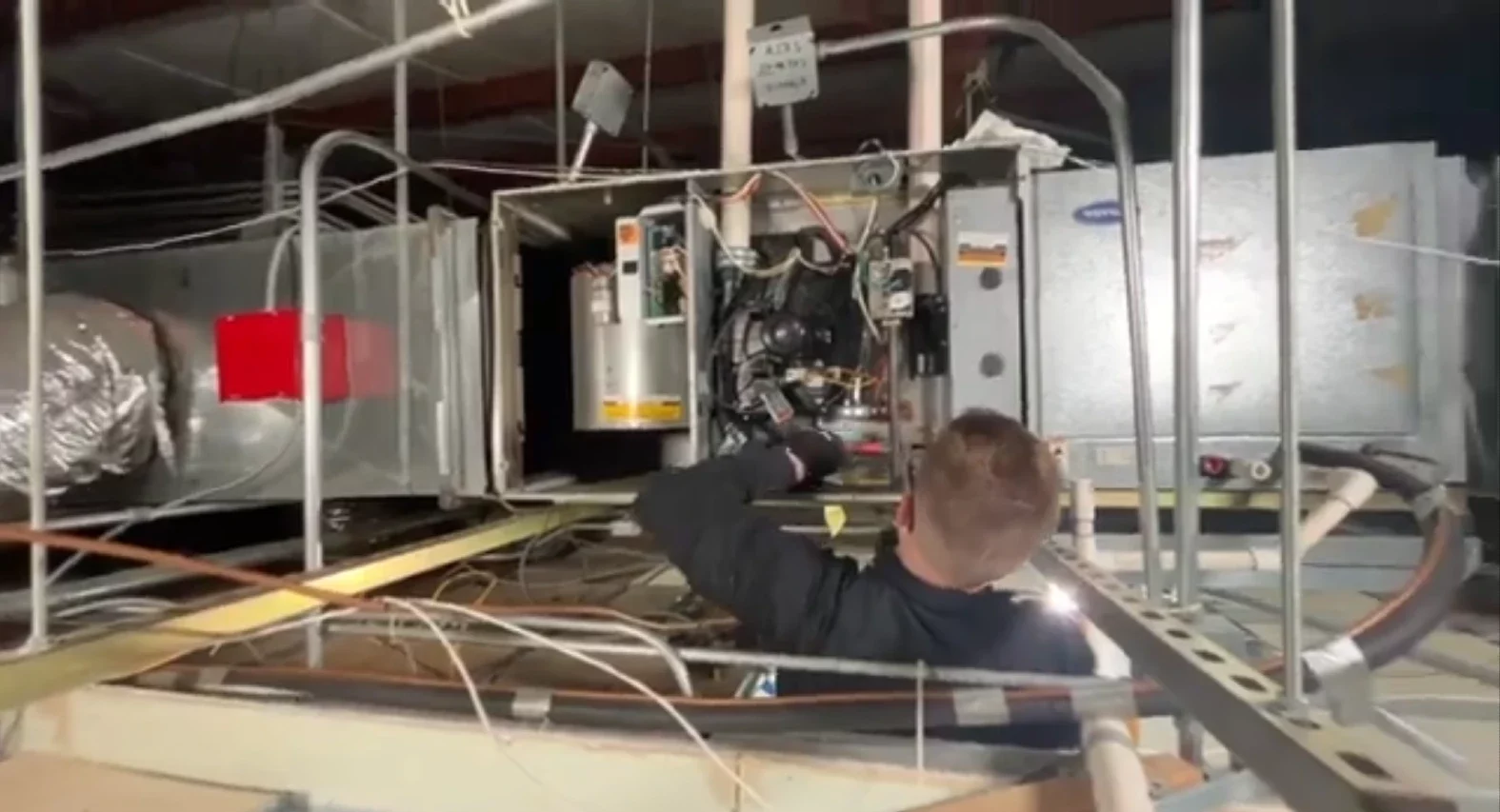
If your electric furnace won’t turn on, you’re likely left with a cold house and some serious questions. Electric furnaces are generally reliable, but when something goes wrong — whether it’s no heat, no blower, or nothing at all — it’s important to understand the system and diagnose the problem safely.
This guide covers the most common causes for an electric furnace not turning on, model examples, key components, and when it’s best to call a professional in NJ.
Common Electric Furnace Models
Electric furnaces use high-resistance heating elements (like large coils) to generate heat, then circulate warm air via a blower motor and ductwork.
Common residential models:
- Goodman MBR series (MBR1200AA-1, etc.)
- Nordyne E3 series
- Rheem RHSL/RBHP air handlers with electric heat kits
- Trane TEM6 or TEM4 models with strip heat add-ons
These units typically require a dedicated 240V power supply and include internal safety switches, sequencers or relays, and multiple heating elements.
1. No Power to the Furnace
Check the following:
- Main breaker panel — Electric furnaces often require 30–60A double-pole breakers. Reset if tripped.
- Service disconnect box — Should be mounted near the unit.
- Internal breaker/fuse — Some models include an internal circuit breaker or cartridge fuse.
If no power is present at the blower or control board, check the disconnect and panel before opening the furnace cabinet.
2. Blown Limit Switch or Thermal Cutoff
If the furnace overheats, it will trip a high-limit switch or thermal cutoff.
- Usually resets manually or automatically once cooled
- Causes: Dirty filters, blocked returns, failed blower motor
- Most models have multiple limit switches — test continuity with power off
3. Bad Sequencer or Control Relay
Electric furnaces use sequencers or relays to stage heating elements and the blower motor. If these components fail:
- The blower may run but no heat is produced
- The unit may hum but not energize the elements
- Nothing may happen at all
You’ll need to test voltage across the sequencer contacts — usually 24V control side and 240V line side.
4. Thermostat Problems
- Make sure it’s set to heat, not fan or cool
- Raise the setpoint 2–5°F above room temp
- Check the R to W signal voltage at the air handler — should be 24V
- Low batteries, disconnected common wire (C), or bad stat can cause no heat calls
5. Bad Heating Element or Open Circuit
If the unit powers on but produces no heat:
- Heating coils may be broken or burned through
- Check continuity across heating element terminals
- Look for burned wires or cracked insulators near the elements
Heating elements must be replaced with model-matched parts — voltage, length, and shape must align with the OEM.
6. Blower Motor Failure
No airflow = no heat circulation.
- Motor may be seized or bad capacitor
- Check for power at motor terminals
- If motor hums but doesn’t turn, suspect capacitor
Many electric furnaces use PSC motors with a 5–10 µF run capacitor. Match both microfarad and voltage rating.
Should You DIY or Call a Pro?
DIY Risks:
- 240V electrical components are dangerous and potentially fatal to work on
- Misdiagnosis can cause overheating, element burnout, or fire
- Replacing parts with incorrect ratings can void warranties and increase risk
When to Call a Pro:
- You don’t have a multimeter or wiring experience
- You suspect a bad sequencer, motor, or element
- You’re unsure about breaker sizing or wiring
In NJ, HVAC pros can get same-day access to parts from distributors like:
- Johnstone Supply
- Ferguson HVAC
- Sid Harvey’s
- United Refrigeration
If your electric furnace won’t turn on, it’s often due to power issues, thermostat failure, limit switch trips, or a blown sequencer or heating element. Always check your power supply and thermostat first — and if you’re not 100% sure, play it safe and call a licensed HVAC technician.
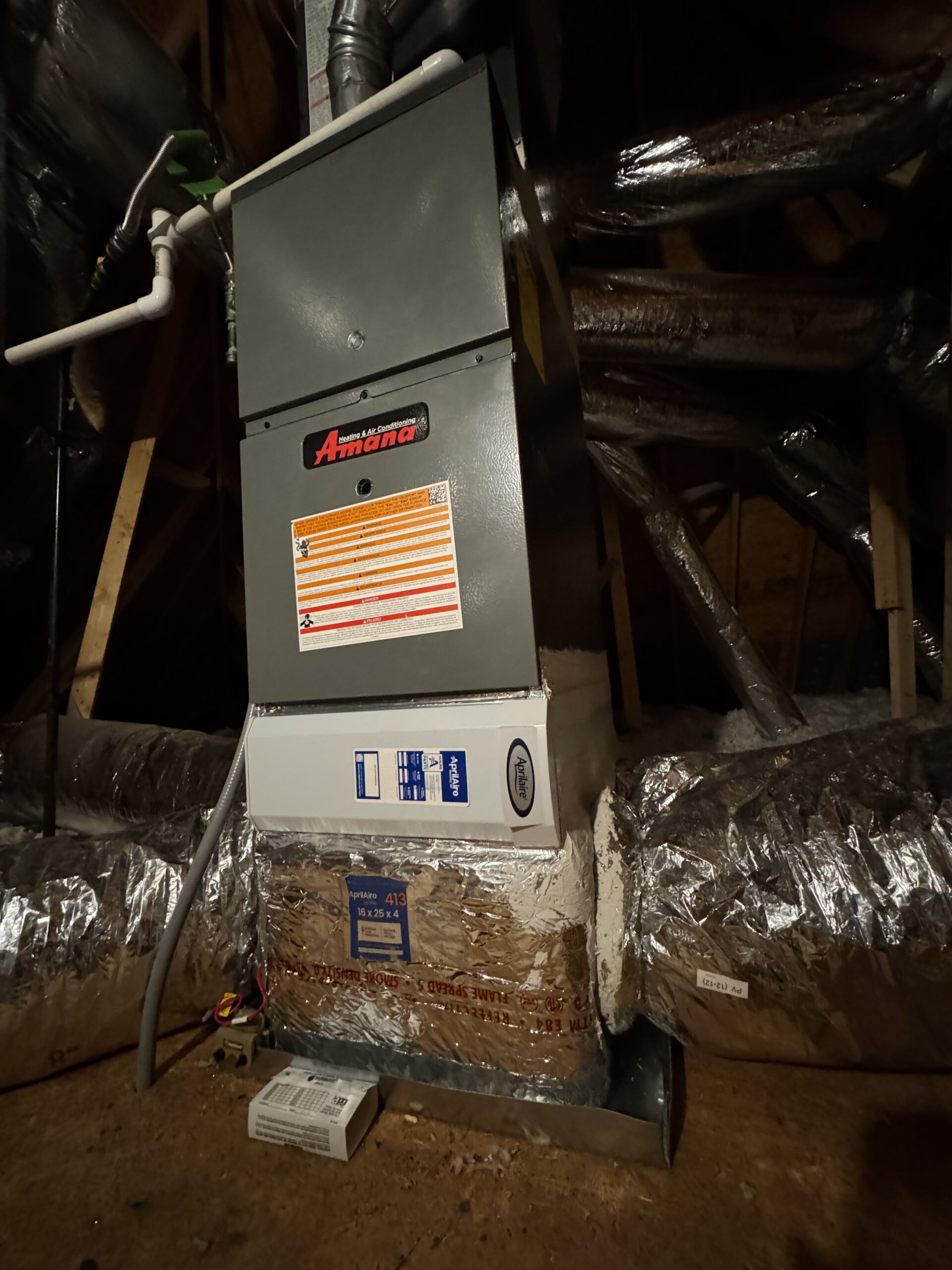
Ultimate Guide to Furnace Repair Issues in New Jersey Homes

Do Higher HVAC Filters Help or Hurt Your System?
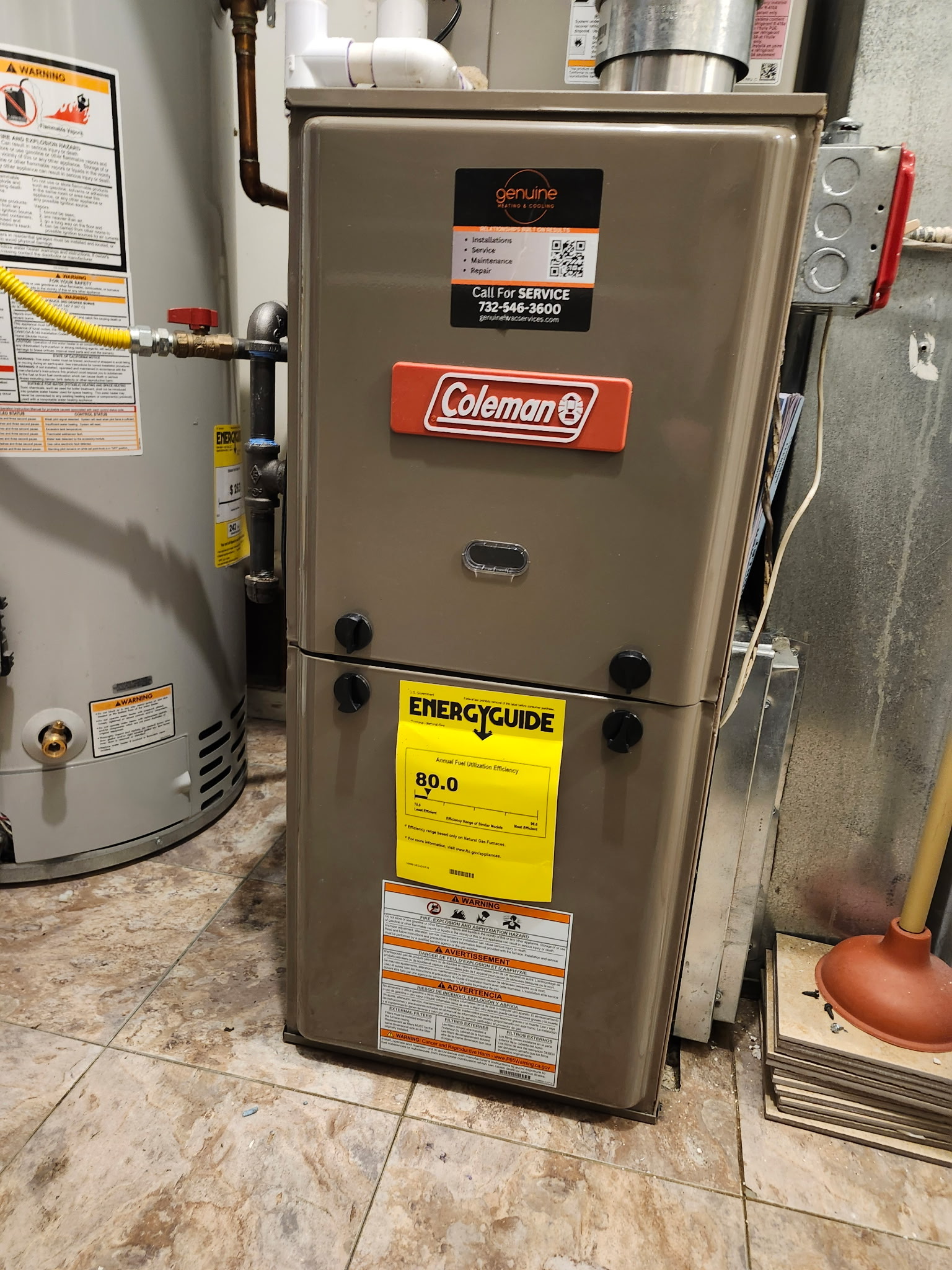
Oil Furnace Won’t Turn On? 8 Common Reasons and How to Fix Them

Electric Furnace Won’t Turn On? Troubleshooting Guide for NJ Homes
